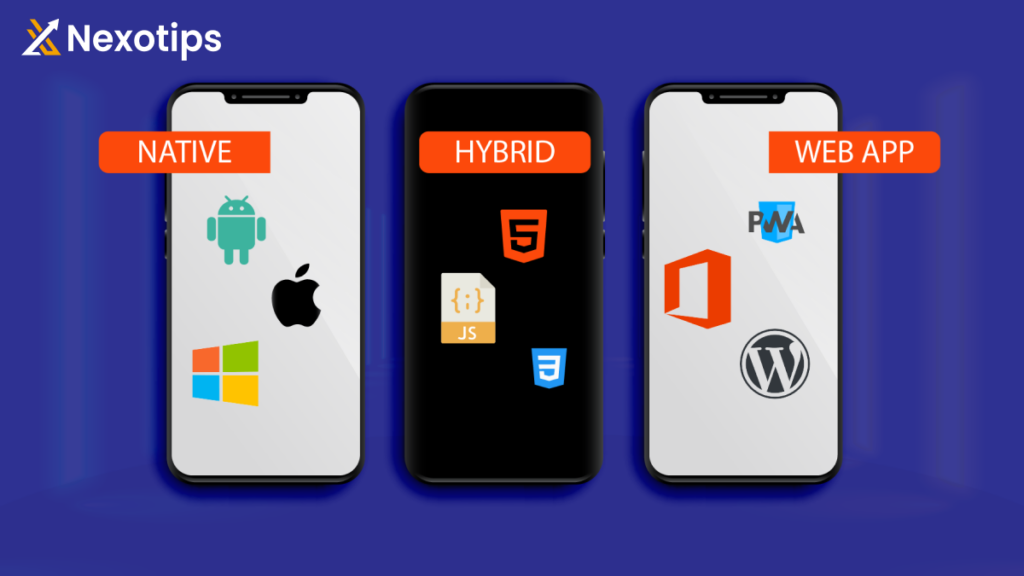
Mastering Mobile App Development: A Comprehensive Guide
From social networking to shopping, from productivity tools to gaming, there seems to be an app for everything. As the demand for mobile apps continues to soar, so does the need for skilled mobile app developers who can create innovative and user-friendly applications.
In this comprehensive guide, we’ll delve into the world of mobile app development, covering everything from the basics of app development to advanced techniques and best practices.
Understanding Mobile App Development
What is Mobile App Development?
Mobile app development is a complex process that requires a combination of technical skills, creativity, and knowledge of user experience design. Developers must consider factors such as screen size, hardware specifications, and operating system requirements when designing and building mobile applications. Additionally, they must stay up-to-date with the latest trends and technologies in the mobile industry to ensure their apps are competitive and user-friendly.

The development process typically involves several stages, including planning, design, development, testing, and deployment. Developers may use a variety of programming languages and tools to create mobile apps, such as Java, Swift, Kotlin, and React Native. They must also adhere to guidelines and standards set by app stores like the Apple App Store and Google Play Store to ensure their apps are approved for distribution.
With the increasing popularity of mobile devices and the growing demand for mobile apps, developers play a crucial role in shaping the future of technology and enhancing the way we interact with our devices.
Importance of Mobile App Development
Smartphones and mobile technology have completely transformed the way we live, work, and communicate. With the advent of these devices, our lifestyle has become more convenient and efficient. We no longer have to rely on traditional methods for various tasks, as smartphones offer a wide range of features and functionalities that cater to our needs.
One of the most significant contributions of smartphones to our lifestyle is the availability of mobile applications. These apps have become an integral part of our daily routine, providing us with instant access to information, services, and entertainment. Whether it’s checking the weather forecast, booking a ride, ordering food, or even managing our finances, there is an app for almost everything.
Mobile applications have revolutionized the way we work as well. With the ability to access work-related documents, emails, and collaboration tools on our smartphones, we are no longer tied to our desks. This flexibility has allowed us to work remotely, increasing productivity and efficiency. Additionally, mobile apps have streamlined various business processes, enabling us to manage projects, track expenses, and communicate with colleagues on the go.
Communication methods have also been revolutionized by mobile technology. With smartphones, we can stay connected with friends, family, and colleagues through various messaging apps, social media platforms, and video calling services. These apps have made communication more convenient, efficient, and cost-effective, as we can now connect with anyone, anywhere, at any time.
Furthermore, mobile applications have transformed the way we access and consume entertainment. We can now stream movies, TV shows, and music directly on our smartphones, eliminating the need for traditional media sources. Gaming has also been revolutionized, with a plethora of mobile games available for download, providing entertainment on the go.
The advent of smartphones and mobile technology has truly revolutionized our lifestyle, work patterns, and communication methods. Mobile applications have played a pivotal role in this revolution, providing us with seamless access to information, services, and entertainment at our fingertips, regardless of time and location. As technology continues to advance, we can expect further innovations in mobile applications, further enhancing our lives and transforming the way we interact with the world.
Types of Mobile Apps
There are three main types of mobile apps:
- Native Apps: These are apps built specifically for a particular platform (e.g., iOS or Android) using platform-specific programming languages and development tools.
- Web Apps: Web apps are accessed through a web browser and are typically built using web technologies such as HTML, CSS, and JavaScript. They run on the device’s browser and do not require installation.
- Hybrid Apps: Hybrid applications amalgamate features from both native and web applications. They are developed using web technologies, yet they are bundled as native apps and can be disseminated through app stores.

Getting Started with Mobile App Development
Choosing a Development Platform
Before you begin developing your mobile app, you’ll need to decide which platform(s) you want to target. The two main platforms are iOS and Android, each with its own set of development tools and programming languages.
Learning the Basics of Mobile App Development
Additionally, staying updated on the latest trends and technologies in the mobile app development industry is crucial for success. This includes learning about new frameworks, tools, and best practices that can help streamline the development process and create more innovative and user-friendly apps.
Furthermore, honing your problem-solving skills and being able to think creatively are important qualities for a mobile app developer. Being able to troubleshoot issues, adapt to changing requirements, and come up with unique solutions to challenges will set you apart in the competitive app development market.
Collaboration and communication skills are also key for mobile app developers, as working with designers, project managers, and other team members is often necessary to create a successful app. Being able to effectively communicate your ideas, listen to feedback, and work well with others will help ensure that your app development projects are completed on time and meet the needs of your clients or users.
Overall, excelling as a mobile app developer requires a combination of technical skills, creativity, problem-solving abilities, and effective communication. By continuously learning and improving in these areas, you can become a successful and in-demand developer in the fast-paced world of mobile app development.
Setting Up Your Development Environment
Once you’ve chosen a platform and learned the basics of app development, you’ll need to set up your development environment. This includes installing the necessary software development kits (SDKs), integrated development environments (IDEs), and other tools required for app development.
Building Your First Mobile App

Defining Your App Idea
The first step in building a mobile app is to define your app idea. What problem does your app solve? Who is your target audience? What features will your app include? Answering these questions will help you create a clear vision for your app.
Designing Your App’s User Interface
User interface (UI) design plays a crucial role in the success of your mobile app. A well-designed UI not only makes your app visually appealing but also enhances usability and user experience. Pay attention to factors such as layout, navigation, color scheme, and typography when designing your app’s UI.
Developing Your App’s Functionality
With your app idea and UI design in place, it’s time to start developing your app’s functionality. This involves writing code to implement the features and functionality outlined in your app’s design. Break down your app’s features into smaller tasks and tackle them one at a time, testing each feature as you go.
Testing and Debugging Your App
You’ll need to test your app on various devices and operating system versions to ensure compatibility and identify any bugs or issues. Use debugging tools and techniques to troubleshoot and fix any problems that arise during testing.
Publishing Your Mobile App
App Store Optimization (ASO)
In addition to optimizing the title, description, keywords, and visuals of your application, there are several other strategies you can employ to enhance its visibility and increase the number of downloads in app stores.
One important aspect to consider is the selection of relevant and popular keywords. Conduct thorough research to identify the keywords that users are most likely to search for when looking for an app like yours. Incorporate these keywords strategically in your app’s title, description, and metadata to improve its ranking in search results.
Another effective way to enhance your app’s visibility is by creating an eye-catching and compelling app icon. A visually appealing icon can attract users’ attention and encourage them to click on your app when browsing through the app store. Ensure that the icon accurately represents your app’s purpose and stands out among competitors.
Furthermore, optimizing your app’s screenshots and preview videos can significantly impact its visibility and downloads. Use high-quality visuals that showcase the key features and functionalities of your app. Consider including captions or annotations to highlight the unique selling points of your app and entice users to download it.
Additionally, encouraging positive user reviews and ratings can greatly influence the visibility and credibility of your app. Positive reviews and high ratings not only attract potential users but also improve your app’s ranking in search results. Implement strategies to prompt users to leave reviews, such as in-app prompts or incentives.
Promoting your app through various marketing channels is also crucial for maximizing its visibility. Utilize social media platforms, email marketing, content marketing, and paid advertising to reach a wider audience and generate interest in your app. Collaborate with influencers or bloggers in your niche to create buzz and increase the chances of your app being discovered.
Regularly monitoring and analyzing your app’s performance in app stores is essential to identify areas for improvement. Utilize app store analytics tools to track downloads, user engagement, and conversion rates. Analyze user feedback and behavior to make data-driven decisions and optimize your app accordingly.
In conclusion, optimizing your app for app stores involves a comprehensive approach that includes keyword research, visual enhancements, positive reviews, marketing efforts, and continuous analysis. By implementing these strategies, you can maximize your app’s visibility, increase downloads, and ultimately achieve success in the competitive app market.
Submitting Your App to App Stores
To make your app available to users, you’ll need to submit it to the relevant app stores (e.g., the Apple App Store for iOS apps and Google Play Store for Android apps). Follow the submission guidelines and requirements provided by each app store, and be prepared to wait for the approval process to complete.
Marketing and Promoting Your App
Version 2: Successfully launching your app is just the beginning of a long journey towards achieving widespread adoption and success. In order to captivate users and drive significant downloads, it is imperative to employ effective marketing and promotional strategies. This entails going beyond the app development process and focusing on creating a strong online presence.
One of the key steps in this process is developing a dedicated website or landing page for your app. This serves as a central hub where potential users can learn more about your app’s features, benefits, and how it can enhance their lives. A well-designed and informative website can instill confidence in users and encourage them to download your app.
In addition to a website, leveraging various social media platforms is crucial for reaching a wider audience. By creating engaging content, sharing updates, and interacting with users, you can generate buzz and build a community around your app. Social media platforms such as Facebook, Instagram, Twitter, and LinkedIn provide opportunities to showcase your app’s unique selling points and connect with potential users.
Paid advertising campaigns can also play a significant role in boosting app downloads. Platforms like Google Ads, Facebook Ads, and Apple Search Ads allow you to target specific demographics and reach users who are more likely to be interested in your app. By carefully crafting compelling ad copy and utilizing eye-catching visuals, you can entice users to click on your ads and explore your app further.
Establishing connections within the realm of mobile app development with influencers and app review websites can significantly enhance your app’s visibility. Influencers, who wield substantial followings and influence within your app’s target market, can effectively promote your mobile app development project to their audience through sponsored posts or reviews. This strategic collaboration has the potential to significantly increase your mobile app development project’s exposure and credibility. Similarly, securing reviews from reputable app review websites within the mobile app development sector can yield valuable feedback and attract attention from potential users.
In conclusion, successfully launching your mobile app development project is merely the initial step towards achieving widespread adoption. To entice users and boost downloads, it is crucial to implement efficient marketing and promotional strategies within the mobile app development domain. This may involve developing a dedicated website, leveraging social media platforms specific to mobile app development, executing targeted paid advertising campaigns, and establishing connections with influencers and app review websites specialized in the mobile app development field. By strategically employing these tactics within the mobile app development landscape, you can elevate your app’s visibility, attract users, and ultimately drive its success in the competitive mobile app market.
Advanced Topics in Mobile App Development
Monetization Strategies
There are various ways to monetize your mobile app, including in-app purchases, subscriptions, advertising, and selling digital goods or services. Choose the monetization strategy that best aligns with your app and target audience.
Performance Optimization
This involves optimizing code, reducing resource usage, and implementing techniques such as lazy loading and caching to improve performance and minimize load times.
Security and Privacy
Protecting user data and ensuring the security of your app is paramount. Implement security best practices such as data encryption, secure authentication, and secure communication protocols to safeguard sensitive information and mitigate security risks.
Conclusion
Mobile app development is a rapidly evolving field that offers endless opportunities for developers to showcase their creativity and bring innovative ideas to life. Whether you have years of experience in app development or are just starting out, it is crucial to continuously improve your skills and stay updated with the latest trends and technologies in the industry.
This manual serves as a comprehensive guide to help you navigate the realm of mobile app development. It provides valuable guidelines and best practices that will assist you in creating high-quality and impactful mobile applications. By following these guidelines, you can ensure that your apps are not only functional but also user-friendly and visually appealing.
However, it is important to note that the world of mobile app development is constantly evolving. New tools, frameworks, and programming languages are introduced regularly, and staying up-to-date with these advancements is essential to stay competitive in the industry. By dedicating yourself to ongoing education and learning, you can keep pace with the latest trends and ensure that your apps are built using the most efficient and cutting-edge technologies.
Commitment and perseverance are key traits for any successful mobile app developer. Building a great app requires time, effort, and attention to detail. It involves writing clean and efficient code, conducting thorough testing, and continuously refining and improving your app based on user feedback. By embracing these qualities, you can create apps that not only meet the needs of your target audience but also exceed their expectations.
In conclusion, mobile app development offers a world of possibilities for developers who are willing to invest their time and effort into honing their skills. By following the guidelines provided in this manual and staying updated with the latest advancements in the industry, you are on the right path to crafting effective and influential mobile applications. So, embrace the joy of coding and embark on your journey to create amazing mobile apps that leave a lasting impact on users.
others: 10 Best Web Design Trends For 2024.

One thought on “Mastering Mobile App Development: A Comprehensive Guide”